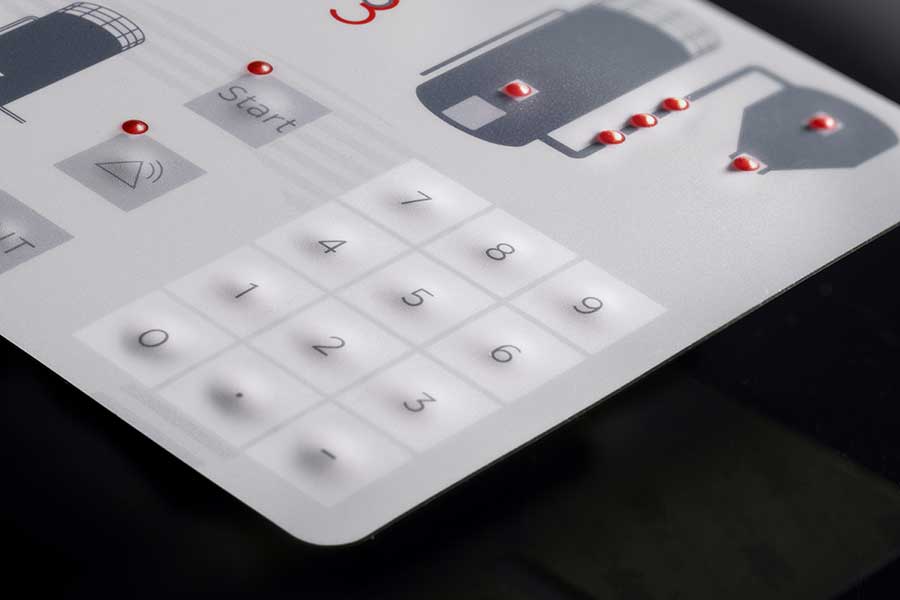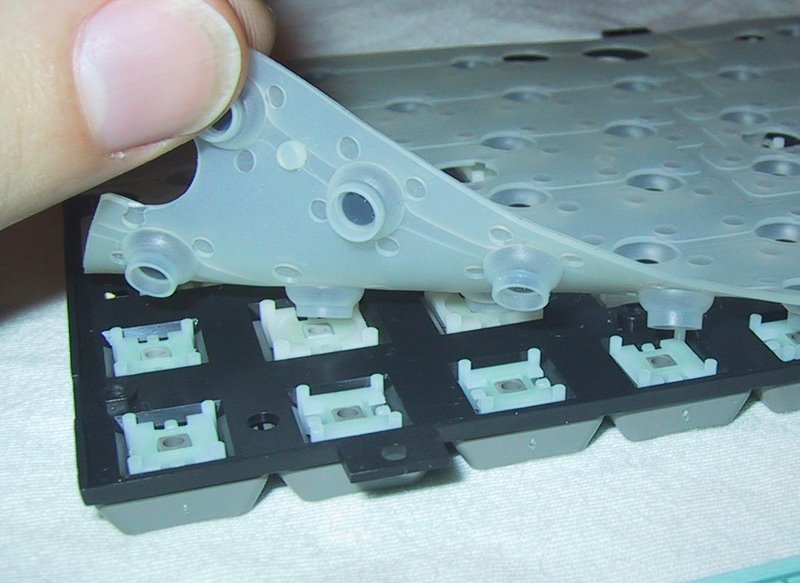Crucial Functions to Look for When Selecting a Membrane Switch
Crucial Functions to Look for When Selecting a Membrane Switch
Blog Article
Understanding the Functionality of Membrane Layer Changes for Customer Interface Devices
The performance of membrane switches stands for a substantial improvement in individual interface style, combining efficiency with aesthetic flexibility. As sectors significantly focus on user experience, recognizing the subtleties of membrane layer switch technology comes to be vital.
What Are Membrane Layer Switches?
Membrane layer buttons are cutting-edge user interface gadgets that assist in individual interaction with electronic tools. These versatile components are composed of multiple layers, consisting of a visuals overlay, spacer, and a published circuit layer. The layout enables a seamless assimilation right into various digital gadgets, boosting both the visual and functional aspects of individual interfaces.
Membrane layer switches are commonly employed in a vast array of applications, from house home appliances to commercial machinery and clinical tools. Their building commonly includes a thin profile, making them an excellent choice for small styles. The tactile feedback given by these buttons can be engineered to fulfill certain user preferences, ensuring efficient communication in between the user and the gadget.
Durability is one more considerable advantage of membrane layer switches, as they are immune to dirt, moisture, and chemicals, which improves their lifespan sought after settings. In addition, these switches can be tailored in terms of shape, dimension, and graphic style, permitting branding and user-specific features. Generally, membrane changes represent a practical remedy for improving individual experience in digital tools, combining functionality with visual charm in an effective manner.
Exactly How Membrane Layer Changes Work
Operating on a straightforward concept, membrane changes make use of a layered construction to register individual input effectively. Each switch is composed of numerous layers, including a printed circuit layer, a spacer layer, and a top graphic layer, which are designed to work with each other perfectly. When an individual presses the leading layer, it compresses the spacer layer, bringing the conductive elements of the circuit layer into contact with each other.
This call produces a shut circuit, signifying the tool to carry out a particular function. The design enables various arrangements, consisting of tactile feedback, which can enhance the customer experience by supplying a physical feeling upon activation. The products used in membrane buttons often include flexible substratums, such as polyester or polycarbonate, which ensure toughness and resilience versus deterioration.

Secret Benefits of Membrane Switches

An additional significant benefit is their compactness. Membrane layer buttons are thin and light-weight, which allows makers to save area in their devices without sacrificing capability. our website This attribute is especially beneficial in applications where weight and volume are critical considerations.
Additionally, membrane layer buttons are resistant to dirt, dampness, and chemicals, enhancing their resilience. This resilience extends their lifespan and reduces the need for frequent replacements, resulting in cost savings with time.
Furthermore, the responsive feedback supplied by membrane layer buttons can be maximized to improve user interaction. They can consist of features such as elevated switches or audible clicks, boosting use and individual experience.
Applications Throughout Industries
User interface tools using membrane layer switches are prevalent in a broad range of sectors, showcasing their versatility and performance. Membrane Switch. In the clinical market, membrane buttons are indispensable to devices such as analysis equipment and individual tracking systems, where their resilience and ease of cleaning are vital for keeping health standards. Likewise, in the vehicle industry, these switches are employed in control panel controls and infotainment systems, providing a smooth and modern user interface for individuals.
In addition, the consumer electronics field gain from membrane switches in home appliances and portable tools, where small design and easy to use interfaces improve customer experience. Industrial applications additionally leverage membrane layer switches over for control panels in equipment and automation systems, emphasizing their effectiveness and resistance to harsh environments.
In the aerospace and protection markets, membrane buttons are used in cabin controls and equipment, where integrity and performance under extreme problems are extremely important. Additionally, the video gaming market increasingly integrates membrane buttons in controllers and game makers, adding to an interesting user experience. Generally, the versatility of membrane switches over enables their widespread use throughout countless markets, highlighting their significance in modern-day user interface layout.
Future Patterns in Membrane Switch Technology

Additionally, the usage of advanced products, such as polycarbonate and polyester movies, is expected to rise, offering enhanced toughness and resistance to ecological stressors. These products contribute to the overall long life of membrane buttons, making them suitable for harsher industrial applications.
Furthermore, the incorporation of wise innovation, consisting of IoT connectivity, will certainly enable membrane layer buttons to interact with various other devices and systems, facilitating an extra interactive user experience. This fad straightens with the growing demand for wise tools across various markets, from healthcare to consumer electronic devices.
Lastly, personalization choices are expected to increase, allowing makers to develop bespoke services tailored to specific customer requirements and choices. These advancements try this will certainly position membrane switches as necessary components in the advancement of user interface innovation.
Final Thought
In conclusion, membrane layer switches over stand for a critical advancement in user interface innovation, offering a trustworthy and functional remedy for varied electronic applications. As innovations in material scientific research and touch sensing innovations proceed, the performance and applicability of membrane layer buttons are anticipated to expand, reinforcing their relevance in modern electronic gadgets.
Report this page